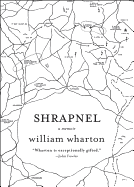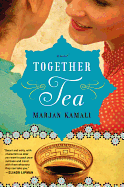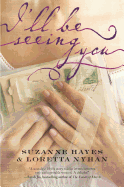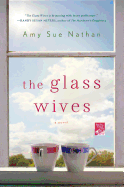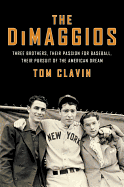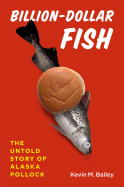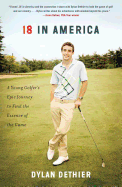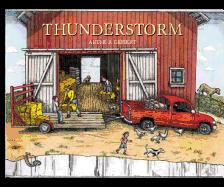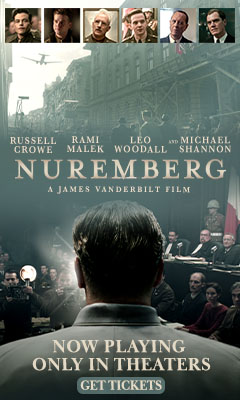Tuesday, May 28, 2013
The Clinton (Iowa) LumberKings are the Class A Midwest League team of the Seattle Mariners--the lowest rung of full-season baseball. They play in a community-owned, WPA-built field, on the banks of the Mississippi. Clinton is dominated by an ADM corn-processing plant, punctuated with the melancholy sound of a train whistle and the unusual crowd noise of a baseball game. Here Lucas Mann sets Class A: Baseball in the Middle of Everywhere (Pantheon), his story of the 2010 season in the town. It's a chronicle of baseball, an exploration of a once-thriving Midwest town and a bit of a memoir. Lucas writes, "I set all my happiest memories on baseball fields."
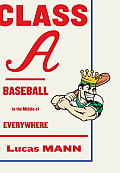 Does one need a childhood experience of baseball to love the game as an adult? "It would seem hard to come to baseball without that background. Baseball can be incredibly boring, but if you have memories, there is so much open space--it's made for digression and story-telling. Football, soccer, basketball are perfect sports for our frenetic modern consciousness. With baseball, it's a time warp, it's nostalgic, so evocative. It's ripe with metaphor and story. I wanted the feeling and the structure of the book to mimic the long hot summer of baseball in a small town. How easily your mind can wander there. So it digressed into memoir and history, and the weird fugue-like state of being a fan and investing so much into the team." The fans are a constant, the players are itinerant.
Does one need a childhood experience of baseball to love the game as an adult? "It would seem hard to come to baseball without that background. Baseball can be incredibly boring, but if you have memories, there is so much open space--it's made for digression and story-telling. Football, soccer, basketball are perfect sports for our frenetic modern consciousness. With baseball, it's a time warp, it's nostalgic, so evocative. It's ripe with metaphor and story. I wanted the feeling and the structure of the book to mimic the long hot summer of baseball in a small town. How easily your mind can wander there. So it digressed into memoir and history, and the weird fugue-like state of being a fan and investing so much into the team." The fans are a constant, the players are itinerant.
The "intoxicating" proximity between players and fans can be both horrifying and pleasing. "Fans invest significance in the game, in the players, and the players just want to leave for the next level. The tensions between the fans' desires and the players are most present at A level."
Lucas writes about the Clinton fans and the players—most of whom will not make it farther than Class A--with affection, passion and poignancy, in this deft portrayal of a slice of America. He knocks it out of the ballpark with ease. --Marilyn Dahl, editor, Shelf Awareness for Readers
Together Tea
by Marjan Kamali
Darya loves mathematics so much that she makes spreadsheets and graphs for each of her daughter's potential suitors. But Mina--still single at 25, unhappy in business school and longing to pursue her artistic dreams--wants her mother to stop the matchmaking. When an afternoon tea date with yet another potential husband ends in tears, Darya begins to question the effectiveness of her system, and Mina makes a bold decision. For the first time in 15 years, the two women return to Iran, to the city and the family they fled shortly after the Islamic Revolution. Marjan Kamali's debut novel, Together Tea, is the story of what they find there--both in the people they left behind, and in themselves.
Mina has always felt like an outsider, caught between the Iran of her family's past and the American culture of her teens and 20s. Darya, meanwhile, is proud of her children's and husband's success in the United States, but misses the social ties and the intellectual respect she enjoyed in Iran. Kamali deftly alternates between their perspectives, showing both sides of the cultural divide with grace and humor. She also weaves memories of life in Iran into the book's present-day narrative, underscoring the deep ambivalence both Darya and Mina harbor toward their home country: a place of beauty, warmth and color, but also of protests, bombs and danger.
Lighthearted but also deeply moving, Together Tea explores the intricate pattern of a mother-daughter relationship fraught with cultural expectation but undergirded by deep love and respect. --Katie Noah Gibson, blogger at Cakes, Tea and Dreams
Discover: A lighthearted yet moving debut novel about a mother and daughter who return to Iran after decades away, restoring--and testing--their relationship.
I'll Be Seeing You
by Suzanne Hayes and Loretta Nyhan
I'll Be Seeing You is a gem of an epistolary novel celebrating the friendship of two women who have never met in person. Suzanne Hayes (The Witch of Little Italy) and Loretta Nyhan (The Witch Collector) should know their topic well--like their lead characters, these two best friends haven't yet met, composing their novel through e-mails.
As World War II rages, Rita Vincenzo worries about her two men in uniform: her husband, Sal, and 18-year-old son, Toby. In New England, Glory Whitehall tends to her toddler son and awaits the birth of her second child while her husband, Robert, fights overseas. Both women enter a pen pal program for wives of enlisted men, not knowing what to expect. Certainly, the level-headed professor's wife and the bubbly young homemaker aren't prepared for the deep friendship that will ultimately save them both from the unexpected turns of life in wartime.
In the absence of their loved ones, the women struggle. Rita finds herself saddled with the girlfriend she didn't know Toby had--a poor, spineless, uneducated slip of a girl she considers unsuitable for her son. Meanwhile, Glory turns increasingly to her childhood friend Levi for relief from her loneliness, and in the process finds remaining faithful to Robert difficult. Letter by letter, the two women not only commiserate about rations and recipes, they unfold the secrets of their hearts.
This inspiring depiction of the power of friendship begs to be shared between girlfriends as well as mothers, daughters, and sisters, and it's the perfect pick for women's book clubs. Hayes and Nyhan are a winning team. --Jaclyn Fulwood, youth services manager, Latah County Library District; blogger at Infinite Reads
Discover: An epistolary novel about two women in World War II America who become close friends through a pen pal relationship, written by two real-life pen pals.
The Glass Wives
by Amy Sue Nathan
Is there an upside to your ex-husband dying (and taking his alimony with him), leaving your 10-year-old twins fatherless? For Evie Glass, there is: she'll finally be rid of the bleached, tattooed Nicole, her ex's mistress-turned-wife. Evie didn't count on being left penniless, though. Then Nicole offers a solution to her money woes--she, unbelievably, wants to cohabitate! So Nicole moves in, whipping the gossip mill into a frenzy in Evie's suburban Chicago town.
Amy Sue Nathan's The Glass Wives cooks up a Modern Family-esque premise as ex-wife and new wife come together to grieve their respective losses. Evie struggles to comfort her devastated children while she adjusts to living with her ex-husband's widow, who turns out to be shockingly sympathetic--with much more to her than one bad choice of husband-poaching. Soccer games and school fundraisers become comically horrifying encounters with nosy neighbors determined to judge the unusual arrangement and uneasy truce the two women have formed. The outcome of this unusual tale may come as a surprise, but Nathan's genuine characters, beautifully descriptive prose and her knack for creating a realistic portrait of an untraditional albeit loving family are refreshing. --Natalie Papailiou, author of blog MILF: Mother I'd Like to Friend
Discover: A debut novel that reveals what happens when three children and two former wives of the same man begin sharing one house.
Mystery & Thriller
Angel Baby
by Richard Lange
Richard Lange's Angel Baby starts with Luz literally busting out of the hellish life she has in Mexico with her abusive husband, Rolando. While he's away, she shoots her way out of the house where she's kept under guard, and hooks up with Malone, an American who will drive her over the border so she can reunite with her young daughter, Isabel, in Los Angeles.
The problem with this plan? Rolando is El Principe, a big shot in a drug cartel, and there's no way he's letting Luz get away. He puts his most dangerous man, Jerónimo, on her trail, threatening to kill Jerónimo's family if he fails to bring Luz back. Along the way, a crooked Border Patrol cop also gets involved, and Luz's dream of seeing Isabel again gets dimmer--as well as her hope that she'll survive Rolando's wrath.
As in his debut novel, This Wicked World, Lange showcases a cast of complicated, multidimensional characters. Jerónimo is a stone-cold killer, but he's also terrified for the family he dearly loves. Luz is a former drug addict who's made bad choices, but she's determined to go clean and start over with her child, if she's given the chance. Malone is a sad drunk, but will do the right thing when necessary. At times, the story digresses into the backgrounds of too many characters, but Lange's unflinching glimpses into people's hearts, where darkness resides alongside the light, make this a riveting read. --Elyse Dinh-McCrilllis, freelance writer/editor, blogging at Pop Culture Nerd
Discover: A dark tale about people who are both bad and good, searching for their moral compass even if it doesn't always point in the right direction.
Biography & Memoir
The Moonlight Sonata at the Mayo Clinic
by Nora Gallagher
The Moonlight Sonata at the Mayo Clinic is the third book in a quartet of memoirs documenting Nora Gallagher's quest to live her faith in the modern world. In Things Seen and Unseen, Gallagher chronicled her experiences as a "tourist" amid Christianity. In Practicing Resurrection, she reflected upon her brother's death and considered entering the Episcopalian religious life. Now, Gallagher seems baptized by fire when a routine eye exam--one she almost cancels--propels her into a web of uncertainty about her failing eyesight.
The story is structured in three parts: "Drowning" reveals a serious inflammation of Gallagher's optic nerve. In "Limbo," she is suddenly at the mercy (or lack thereof) of doctors and a medical establishment unable to offer a concrete diagnosis. After a year of searching for answers, Gallagher and her husband finally make a pilgrimage from their home in Santa Barbara, Calif., to the Mayo Clinic in Minnesota, where specialists offer insight and treatment options. In "Recalled to Life," Gallagher begins to process the ambiguity of her condition, but not before additional complications impede her progress.
Mystery, confusion and doubt infuse the unmitigated honesty of this memoir that maps the broad implications of disability. As she loses aspects of her sight, her ability to read and her faith, 60-year-old Gallagher examines her life and mines her liberal Christian beliefs. Church fails to provide comfort and a sense of connection, but words do, and Gallagher artfully employs them to write a beautifully rendered portrait of the frailty of the human condition. --Kathleen Gerard, blogger at Reading Between the Lines
Discover: When a spiritual writer learns she may be going blind, her search for a diagnosis ultimately redefines her faith.
Shrapnel: A Memoir
by William Wharton
In his novels, William Wharton (1925-2008) often wrote about the shattering effects of war. His protagonists in Birdy and A Midnight Clear dealt with the violence, absurdity and randomness of war with varying degrees of success, always through a distancing veil of fiction. Shrapnel, a memoir of his World War II experiences, is a document of the actual events--some humorous, some harrowing--that inspired his classic novels.
Shrapnel describes in exacting detail the litany of absurdities a wartime grunt endures before being sent into combat, as Wharton endures the strain of mind-numbing repetition and the moronic orders of martinet commanders. When he finally sees fighting, the randomness of who survives and who dies leaves a deep impression. The cool, unemotional narrative makes the instances of violence more real and the black humor more aching.
Wharton proves his competence in combat, but lacks the butt-kissing instinct for sustained success in uniform. His various, low-level rebellions to protest the constant stupidities will remind many of Catch-22. One event, recounted with clinical detachment, encapsulates and underscores the wound war left on Wharton's psyche; as innocent soldiers die around him, the realization dawns that something important has also died inside the survivors.
The emotionally charged Shrapnel is a worthy addition to World War II literature and a well-crafted capstone to Wharton's literary career. --Donald Powell, freelance writer
Discover: Wharton, a National Book Award winner for Birdy, set down his own wartime experiences shortly before his death.
A Dog Walks into a Nursing Home: Lessons in the Good Life From An Unlikely Teacher
by Sue Halpern
With her husband, author Bill McKibben, often traveling and their daughter away at school, Sue Halpern and her Labradoodle, Pransky, had time on their paws. They took on therapy dog training as their mission. Pransky, then seven, a good and smart pet, had spent her life romping off-leash in the Vermont woods, but after months of heeling, stopping, staying and coming, they earned Pransky's red bandanna.
In A Dog Walks into a Nursing Home, Halpern (Four Wings and a Prayer) entertainingly relates the often humorous anecdotes of Pransky's therapy-dog visits. But she also ponders their experiences, and intersperses amid Pransky's tales ancient and modern philosophies, the history of care for the elderly and discussions of the financial, medical and psychological ramifications of end-of-life care.
We get to know the nursing home residents and their relationship to Pransky, who could sense not only whose cabinet held Milkbones, but who needed a cuddle, or whose spasmodic hand longed to lie on her head. Sue was a willing conversationalist at the end of Pransky's leash, but "hope was the thing with wispy, tan tail feathers."
Halpern asks "What makes a good life?" near the book's end. She offers ample anecdotes from Pransky's work, along with religious and scholarly tenets, leaving readers with this inspiration: be charitable, and never underestimate the power of dog love. --Cheryl Krocker McKeon, bookseller, Book Passage, San Francisco
Discover: One glance at the Labradoodle sporting a nurse's cap on the cover of Halpern's therapy dog memoir will boost anyone's spirits.
The DiMaggios: Three Brothers, Their Passion for Baseball, Their Pursuit of the American Dream
by Tom Clavin
While Tom Clavin's The DiMaggios would be any baseball lover's dream, it transcends mere fan adulation. It is a touching, penetrating look at the dynamics of family, a vivid evocation of a vanished time and a study of the corrosive effects of fame on the overly proud Joe DiMaggio.
While Dom and Vince DiMaggio never measured up to the lofty achievements of Joe, both brothers were talented big leaguers in their own right. Dom was a borderline Hall of Famer for the Red Sox, one of the most graceful and beloved center fielders ever to play in Fenway Park. Vince, the eldest, was the first to try his hand at baseball, partly for his love and aptitude for the game, but also to escape the backbreaking labor of their father's fishing trade.
Clavin excels at portraying the generational tension between hardworking Giuseppe DiMaggio, an Italian immigrant plying his trade off Fisherman's Wharf, and his sons' seemingly lazy pursuit of making it in America through a "boy's game." Even more pointed is his depiction of Joe's increasing estrangement and isolation from his brothers as his fame swells. Throughout The DiMaggios, Dom emerges as the bigger man, the one who constantly brokers family feuds sparked by the proud and isolated Joe.
Clavin's effort in The DiMaggios is comparable to great baseball writers like David Halberstam, but it is also spot on in its depiction on the price of the American Dream and its attendant joys and sorrows. --Donald Powell, freelance writer
Discover: This is great sports literature that evokes a lost era in the precarious pursuit of the American dream.
Business & Economics
Billion-Dollar Fish: The Untold Story of Alaska Pollock
by Kevin M. Bailey
The pollock fishing industry in the Bering Sea yields more than a billion dollars' worth of fish each year--much of it headed for the frozen food sections of supermarkets or between fast-food sandwich buns. In Billion-Dollar Fish, biologist Kevin M. Bailey shows us how the story of the pollock is as much about fishing rights as about the science of fisheries. Still, "from the point of view of the fish," he notes, "the problem is not who catches them, but how many are caught."
For centuries, the lowly groundfish pollock had no market; it was merely "one of the best baits known for cod." But when the cod population dwindled, the relatively easy-to-catch pollock became a lucrative substitute--so much so that pollock fishing became the basis of international wrangling among the Japanese, Russians and Americans. It was also the source of ongoing political squabbles in the United States among large fishing companies, environmentalists, marine biologists and coastal communities. As Bailey points out, however, "biology is messy"--no branch of it more than the ecology of fisheries. How many fish are really in the sea? How many die off "naturally" and how many through fishing?
As Bailey blends science with competitive fighting over a substantial pile of money, he tells a pretty good story. Never boring or entangled in scientific jargon, Billion-Dollar Fish practically makes pollock fishing out to be The Old Man and the Sea. --Bruce Jacobs, founding partner, Watermark Books & Cafe, Wichita, Kan.
Discover: The history, science and political drama of the little-known billion-dollar pollock fishing industry.
Sports
18 in America: A Young Golfer's Epic Journey to Find the Essence of the Game
by Dylan Dethier
Dylan Dethier learned to play golf on a shoes-optional par 30 course near his grandparents' house on the Maine coast. Back in Massachusetts, he played on his high school team and got pretty good. He hatched a plan: after graduating, he'd hit the road for a year and play golf in each of the lower 48 states: "I would discover many different Americas and, eventually, find the way back to the heart of the game."
He sets up appointments with family, friends and acquaintances to play with--and stay with--then takes off in his Subaru for points west. His first course is Alder Creek, a "podunk two-buck municipal" in Boonville, N.Y.; in his experience, though, "rounds like this were the best kind." From there, it's off to Washington, racing against the cold and snow, a round at a great course in Michigan's upper peninsula, playing out of snow bunkers in Minnesota, the awesome courses at Oregon's Bandon Dunes, and a near-death experience on a cliff in Wyoming while hiking--along with lots of sleeping in the car, then sneaking into economy hotels for the free breakfasts.
Whether showering in truck stops, meeting Phil Mickelson and Michael Jordan, or playing at Sawgrass and Pebble Beach, the simple story of 18 in America is filled with youthful enthusiasm, honest and sincere. It's a lovely road story well told. --Tom Lavoie, former publisher
Discover: A young golf Kerouac on the road, teeing off all across America and loving it.
Children's & Young Adult
Winger
by Andrew Smith, illus. by Sam Bosma
Winger is a classic coming-of-age story; readers will respond to its complete package of teenage hormones, first love and mischief.
Andrew W. Smith (The Marbury Lens) creates an appealing narrator: "Nothing could possibly suck worse than being a junior in high school, alone at the top of your class, and fourteen years old all at the same time." Ryan Dean attends the prestigious Pine Mountain school, lives in a dorm called Opportunity Hall with other wrongdoers, and plays rugby with his friends. Occasional black-and-white illustrations by Sam Bosma not only quickly acclimate readers to rugby, but also and more often to Ryan Dean's inner genius. This is Ryan Dean's make-it-or-break-it year to reinvent himself, or at least that's what 16-year-old Annie Altman says. Ryan Dean finds Annie "smoking hot in an alluring and mature, 'naughty babysitter' kind of way." She finds him "adorable." At first, the biggest obstacle in this no-way romance is their two-year age difference. All their incredible chemistry and hilarious banter may not be enough in the long run.
Smith's masterful narrative of the hormonal yet insightful teenage boy flows smoothly throughout the novel. Whether in service of Ryan Dean's emotional arc as he tries to get the girl, or smaller moments such as pep talks with his gay friend Joey, it's an unforgettable and unflaggingly appealing voice.
An unexpected tragedy awaits the hero, and while this heartbreaking scene may pain readers, they'll close this must-read book with a sense of hope. --Adam Silvera, Paper Lantern Lit marketing assistant and former bookseller
Discover: A classic coming-of-age story that combines humor and heartbreak in just the right amounts.
Thunderstorm
by Arthur Geisert, illus. by Arthur Geisert
From the opening image of this intricate, nearly wordless book, readers see the animals--predator and prey together--moving toward safety. Thunderclouds pour rain down upon a valley where red barns stand in contrast to the green rolling hills.
Cutaway views reveal foxes nestling in dens below the road, as a family drives a red pickup hauling a flatbed of hay bales above. We follow the family past a silo, where a lightning bolt breaks a line carrying electricity. A caption tells readers that it's Saturday afternoon, July 15, at 12:15. Like a cameraman, Arthur Geisert (Country Road ABC; Ice) takes readers close up and also pans the valley to show the scope of the storm. Geisert's etchings fill in a rain so dense it feels as if we are looking out of a window at a deluge. Readers will pore over the many details included in cutaway views of the family's cupboards, walls and yards. The family also models safety measures. As they resume their hay bale deliveries and the storm gathers strength, they take cover under a stone bridge. By 6:15, the storm clears; the sun is out and neighbors are already gathering to repair the damage.
Geisert chronicles how quickly Nature can destroy, and also how rapidly humans rebound. His beautiful book is timeless. No matter how much technology we may develop, it can never compete with the power of nature, nor the power of a community to band together. --Jennifer M. Brown, children's editor, Shelf Awareness
Discover: A nearly wordless book that chronicles a devastating storm, and its effect on the humans and animals in its path.
| Advertisement nuremberg--now playing in theaters |



